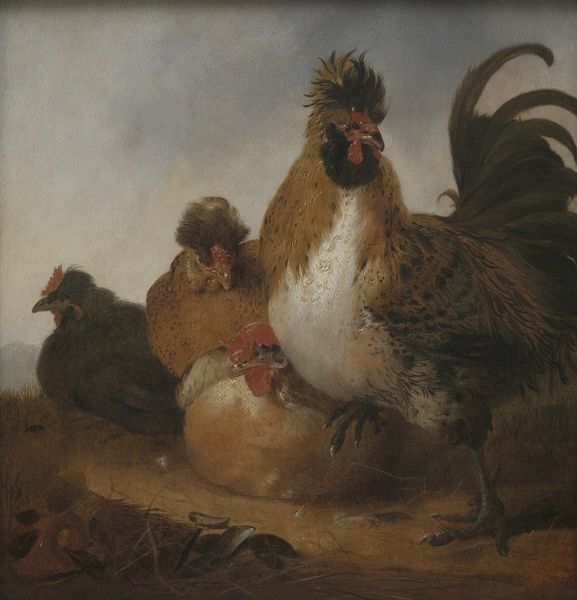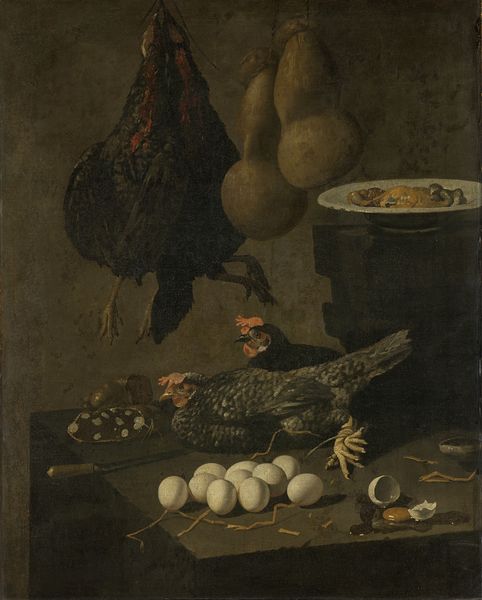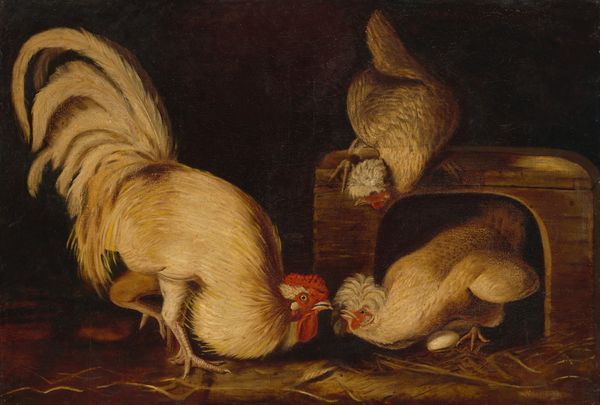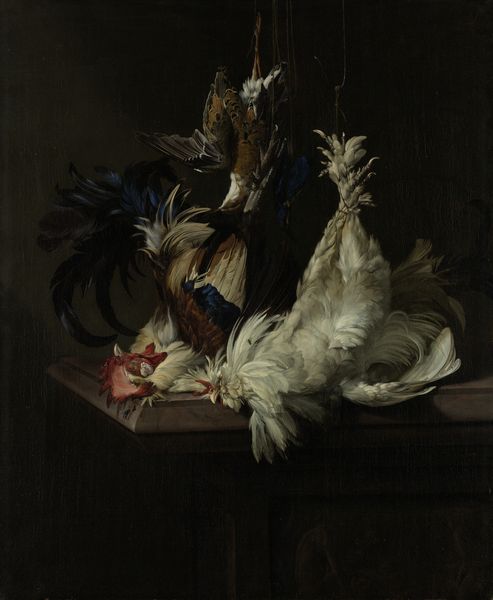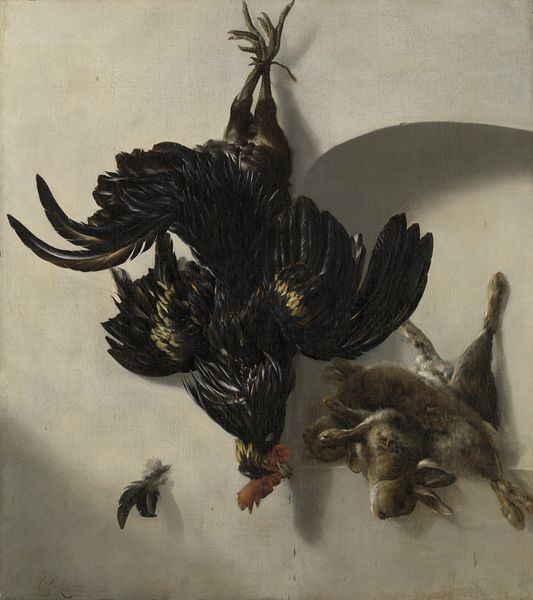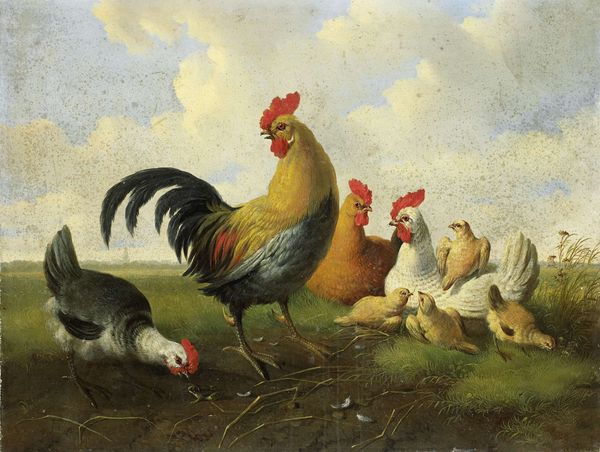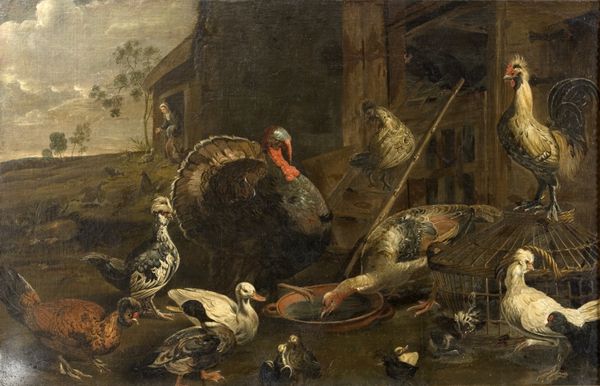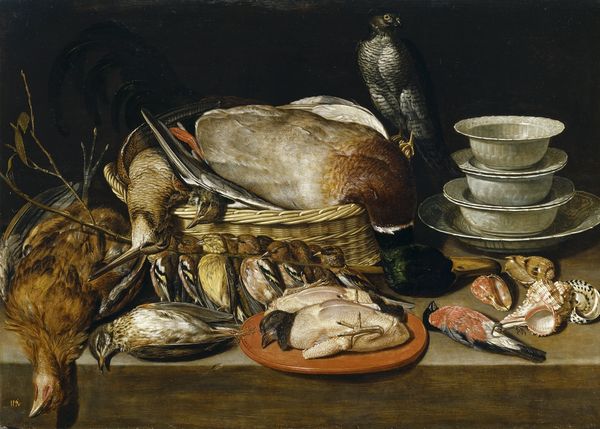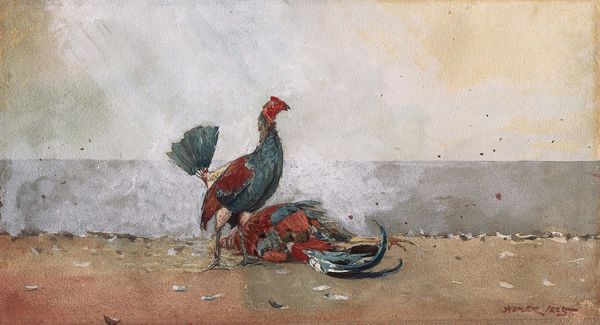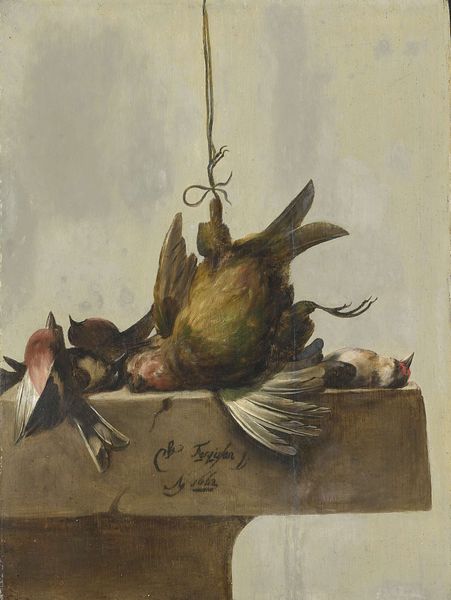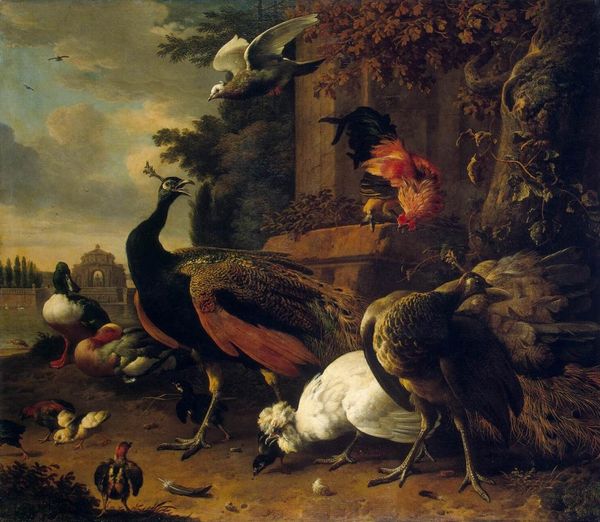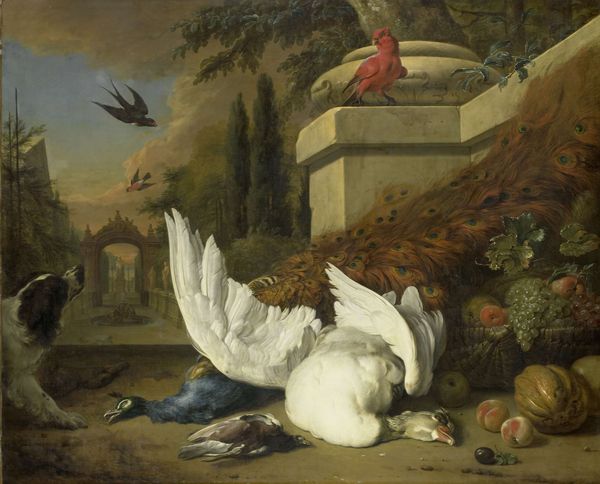
Dimensions: support: 254 x 200 mm
Copyright: CC-BY-NC-ND 4.0 DEED, Photo: Tate
Editor: Oh, wow. It’s… intense. Immediately, I’m struck by the starkness, the stillness, almost a melancholic feel from the dead fowl. Curator: Indeed. What we have here is "Still Life" by Benjamin Blake, painted sometime before his death in 1830, a compelling depiction of dead game, rendered in oil on canvas. Blake's work invites us to consider the social contexts of consumption and display in 19th-century Britain. Editor: Consumption, yes. Death, certainly. I mean, that limp heron is almost theatrical. And the earthenware jug and glass nearby... are we invited to a wake, perhaps? Curator: Perhaps. These elements can be viewed through a lens of power dynamics, reflecting hunting privileges and the societal structures that determined who had access to such bounty. Consider the symbolism of the objects – the jug, the hanging keys – their subtle narratives about domestic space and control. Editor: Control, definitely. But also, maybe a bit of… dark humor? It's like Blake is winking at us from beyond the grave, acknowledging the weirdness of turning death into art. Curator: It serves as a potent reminder of mortality and the ways in which we frame our relationship with the natural world. Editor: It also makes you think, doesn’t it? I might need a drink after that.
Comments
Join the conversation
Join millions of artists and users on Artera today and experience the ultimate creative platform.
tate 7 months ago
⋮
Originally from Wiltshire, Blake worked for most of his life in London, producing small, gem-like larder and game pieces redolent of country life. This represents a larder with a hung heron and drake, a pigeon on the shelf, rough country vessels, and a riding crop and a key hanging on the wall. Together with a coat of arms on the carved shelf, all these combine to suggest the wholesome lifestyle of a well-run if somewhat rustic manor house. The piece harks back to seventeenth-century Netherlandish prototypes and it is no suprise to learn that Blake was employed by dealers to copy old Dutch pictures, some of which were not sold under his own name. Gallery label, August 2004
